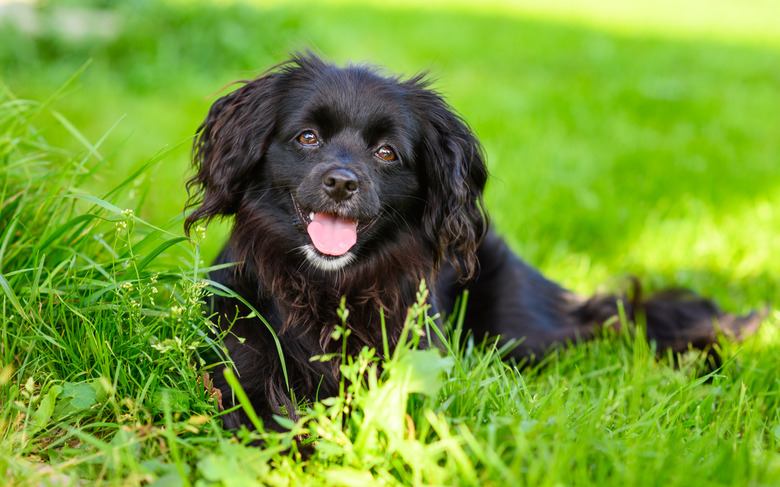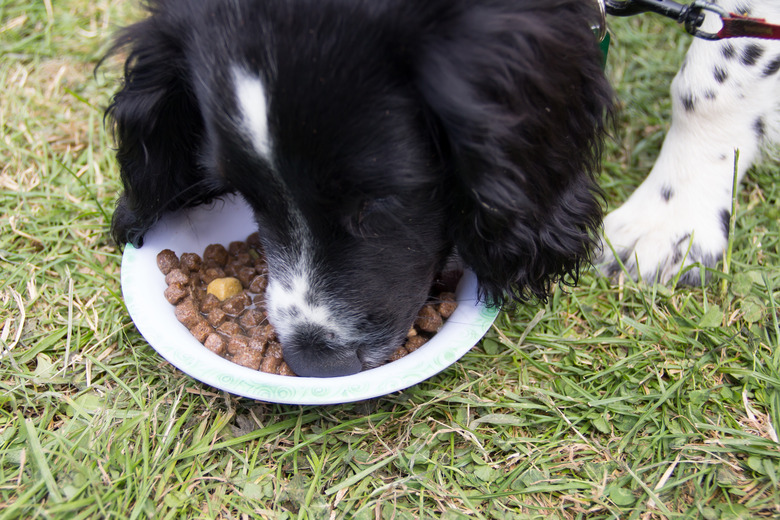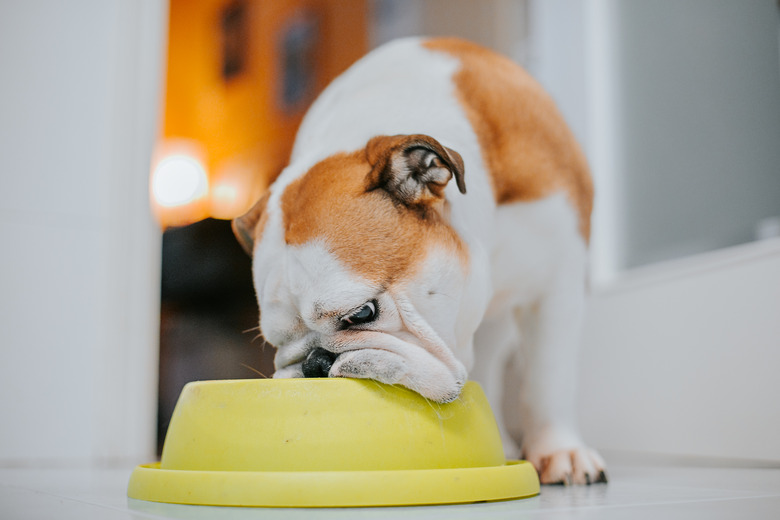How To Feed A Small Dog With No Teeth
Dental issues can affect all dogs especially as they age, but small dogs are particularly prone to tooth decay that can cause them to lose their teeth. Of course, dogs with no teeth still require nutritious meals, but chewing food they used to eat can become a problem. The secret is to make that food or any food easy for them to eat. Fortunately, that's not hard to do.
Why small dogs lose their teeth
Why small dogs lose their teeth
Small adult dogs have 42 teeth just as large adult dogs do. The difference is that while these teeth fit into the mouth of a large dog, it's a tight squeeze fitting them into a small dog's mouth. With the teeth right up against each other, food that gets wedged between teeth isn't likely to come out on its own and may stay there, decaying in place and causing the teeth that are trapping the food to decay too.
Brushing the teeth helps remove food and the plaque that builds up on them. Many dogs dislike having their teeth brushed, however, and they aren't used to it, so their owners don't brush them very often if ever. Some owners aren't even aware that gum disease and tooth loss can be prevented by brushing their dog's teeth or taking the dog to a vet to have plaque removed under anesthesia. If you inherit or adopt an older small dog, he may have tooth loss for which you aren't responsible, but you must still deal with the consequences of him having difficulty eating.
Soften or grind kibble for dogs with no teeth
Soften or grind kibble for dogs with no teeth
If your dog has always enjoyed hard, crunchy kibble, you can continue to feed it just by making the kibble easier to chew. This can be done by adding a little water to the food in the dish. Measure the same amount of kibble as before, assuming you have been careful to give the amount of food recommended by your vet. Small dogs can become overweight very easily by eating too much food, which leads to other health problems besides missing teeth. If you have been overfeeding even a little bit, cut back gradually until you reach the recommended amount.
Warm water will soften the kibble more quickly than cold water, but you don't need to boil it, as warm tap water will work. Use 1 teaspoon of warm water at a time so you don't accidentally add so much that the kibble is swimming in the liquid. Sprinkle the water over the pieces of kibble, let it sit for five to 10 minutes, and then smash the pieces a bit with the back of a spoon, adding another teaspoon of water if necessary. Some people like to use broth instead of water, which is fine as long as it isn't too cold. Keep in mind, though, that dogs who are used to eating dry kibble aren't expecting the taste of broth just because their food is now softer, so you don't need to go to the expense and time of using something other than water.
Another method is to grind the kibble in a food processor. Try grinding the kibble into smaller pieces first and see if your dog can eat it that way. It might be easier to pick up the food if it is in small pieces rather than finely ground. If that still doesn't work well, grind the kibble smaller. Experiment with grinding it dry versus adding water 1 teaspoon at a time before or during grinding, as the liquid may help the ground kibble stick together and be easier to eat than finely ground bits.
Switch to or mix in wet food
Switch to or mix in wet food
Another option is to switch to wet food instead of kibble. Be sure to read the labels on cans of wet food since some contain more fillers than healthy ingredients, and ask your vet for recommendations. Wet food can be more expensive than dry food, however, and if you want to cut the cost of switching food, it's fine to mix the kibble with some wet food. The moisture from the wet food will help soften the kibble, so you may not need to add water.
Any time you change a pet's diet, it's important to introduce the new food gradually. Giving new food too quickly can cause stomach upset and/or diarrhea, and the newness may make a dog hesitant to give it a try. Experts recommend substituting wet food for one-fourth of the kibble the first day, increasing to 50/50 by the third day, three-fourths wet food by the fifth day, and all wet food by the end of one week. If you want to mix the two, stay at the ratio you prefer and that your dog seems to like and is able to eat.
Prepare your own fresh food
Prepare your own fresh food
Still another option is to make healthy food for your dog, which can be raw, cooked, or a combination of both. Discuss your dog's nutritional needs with your vet or a canine nutritionist first, however, to be sure you're feeding the right amounts of protein, vegetables, and starches that will provide the proper vitamins and minerals, which are different for dogs than humans. You'll need to be precise about measurements just as when feeding kibble or wet food so your dog doesn't overeat.
Make sure your homemade food is soft enough and in small pieces or grind or puree it for your dog with no teeth. Also, learn about the foods that are toxic to dogs, including common human fare, like garlic, onions, grapes, raisins, and avocados.


